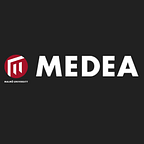Blockbusters for Everyone!
Amputated public domains on the rise
—Linda Hilfling Ritasdatter, artist, and PhD student in Interaction Design, School of Arts and Communication, Malmö University, Sweden.
The public sphere and the public domain are different but interrelated concepts for the circulation of ideas and goods associated with a high degree of openness. Yet, as we know, these concepts are always contingent upon the constraints of specific cultural and technological settings. The project briefly outlined here is a performative intervention into a supposedly open public sphere, reminding us of its compromised nature, not by creating a utopian alternative, but by remediating its contents in an amputated post-utopian public domain of fragmented and truncated information.
In “Kioskbaskere til Alle” (Blockbusters for Everyone), e-book versions of current Danish bestsellers were modified and redistributed, turning stories about sex and murder into conceptual poetry that reflected the changing conditions of literature in a networked and digital public sphere. The public reveals itself as compromised by market interests, but the “Kioskbaskere til Alle” intervention ironically points towards the possibilities of creating alternative publics through amputation.
“Kioskbaskere till Alle” was commissioned by Kunsthal Aarhus as part of the exhibition Systemics #2: As we may think (or, the next world library). The project was simultaneously a deconstructive and constructive critique of the new digital model for the distribution of literature which was launched by the major Danish publishing houses in 2013. In an attempt to maintain market control, this model created artificial scarcity and mimicked the model of analogue book distribution but eventually ended up being more restrictive than the analogue distribution. This is ironic, not least given that the promise of the discourse surrounding digital technologies was always about openness, equal distribution and simplified access to cultural products.
During the exhibition period, the project redistributed new versions of some of the most popular books, “kioskbaskerne” (the blockbusters), from Århus municipality’s public libraries. The physical versions of the modified books could be borrowed like “normal” library books from Risskov library, and the e-book versions were distributed online.
At first glance, the redistributed bestsellers appeared as exact copies of their originals. However, in some copies, a word in the title or parts of the author’s name would be missing. When readers examined the books carefully, they would find that all the novels had been altered. All text that was not literally in the public domain—the so-called wordmarks, which are words or phrases that regardless of their graphical representation have been registered as trademarks—was replaced with blank spaces. This meant that chunks of information were missing and that the readers eventually had to guess the overall meaning of the content.
The experience of this text-based public domain was amputated and fragmented, but because the work excluded the “privatised” words and replaced them with voids, it was precisely under this amputated condition that it could be understood as a public domain.
As proposed by Habermas, within the historical bourgeois public sphere, the private consumption of literature became the building block for so-called public conversations that took place among the privileged members of a society. Habermas, however, articulated his fear of the vulgarisation of these conversations into a “plebeian public sphere”—a public sphere compromised by market interests and corresponding to a society of consumption and mass media.
Libraries have long catered to bestsellers and mass media culture, and this could be connected to this cultural-conservatist idea of an eroded public sphere. However, in the context of a digitally distributed “plebeian public sphere”, the project “Kioskbaskere til Alle” did not reject this development. On the contrary, through a performative and critical intervention, the project utilised the “plebeian public sphere” as a site for making the public aware of contemporary socio-economic contradictions which are undermining the radical ideal of the public domain as consisting of cultural resources that can be shared on equal terms.
The “plebeian public sphere” was reappropriated into an anti-communicative public domain, which through its irrationality and absurdity pointed towards glimpses of understanding the impossibility of being created under the conditions in which it was created—with other words, a post-utopian public domain.
Amputated public domains on the rise: On January 1, 2016, a large part of the major Danish publishing houses withdrew their titles from the public digital library, ereolen.dk.
About the author
Linda Hilfling Ritasdatter is an artist working with the premises of participation and public space within media structures, with a focus on means of control (codes, organization, and law) and their cultural impact. Her artistic practice takes the form of interventions, which in humoristic and often absurd ways reflect on and reveal gaps within existing structures—the place where a system fails and its inadequacies become visible.
